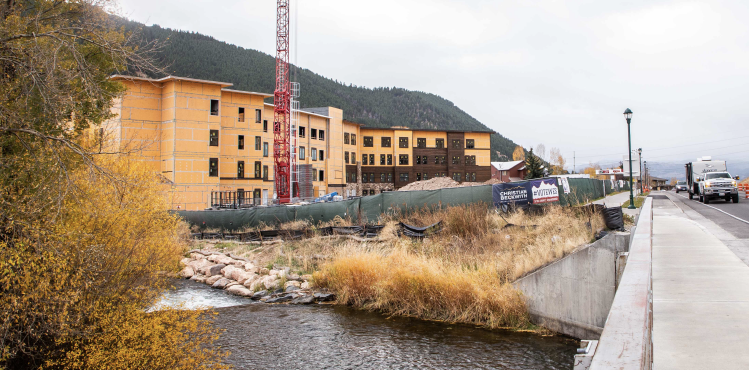Rural Gentrification and the Spillover Effect

With initial funding from the National Institute for Transportation and Communities, we launched a flagship multi-year study to explore interconnected housing, transportation, and land use challenges and strategies in western gateway communities. This study examined the state of planning and development in western gateway communities, particularly in the aftermath of the COVID-19 pandemic, and helped create tools, guidelines, and planning and policy recommendations to assist gateway communities and the regions around them in responding to current and emerging challenges and opportunities.
Executive Summary from the Final Report
Small towns and cities near national parks, public lands, and other natural amenities throughout the West are experiencing rapid growth and increased visitation. These “gateway communities” comprise a significant portion of the rural west, constituting about 31% of all communities and more than 60% of those under 25,000 people. Our prior NITC-funded research shows that growth and increased tourism create a range of “big city challenges” for gateway communities, particularly a significant increase in housing prices. It appears this is pushing the local workforce to outlying areas and other rural communities and, as a result, many developed gateway communities are developing large commuter sheds, despite being small, rural towns. Our observations suggest this rural gentrification and its related spillover effect results in longer worker commutes, higher transportation costs, and impacts on transportation infrastructure, land use, access to opportunity, mobility, equity, and quality of life in these rural towns and cities and the regions around them.
It also appears that COVID-19 has expedited amenity migration and resulted in the “Zoom Town” phenomenon of remote workers relocating from high-income urban areas to rural towns and cities. While we have plenty of anecdotal evidence that this is happening and creating profound impacts throughout the rural West, our empirical evidence and understanding of these dynamics in gateway communities and appropriate solutions for addressing them is limited.
This project studied the extent to which gateway communities throughout the West are experiencing interconnected housing, transportation and land use challenges, and how increased visitation and growth affect these issues. To do so, we conducted a regional survey of over 200 gateway communities; in-depth case studies of four gateway communities that are “out front” in experiencing and/or responding to these issues; and a series of informal interviews and workshops with gateway community representatives from across the West. We also used census data to map commuter sheds and analyze growth and development trends in these places.
Read the final report for the high-level descriptive findings from this study.
Meet the Team
This project was a collaborative effort involving numerous community partners, students, and academics, and it was led by:
- Danya Rumore, Ph.D. (University of Utah): Danya is the Founder and a Co-Director of the GNAR Initiative. She is a professor of planning and law and the Director of the Wallace Stegner Center’s Environmental Dispute Resolution Program at the University of Utah. She specializes in collaborative, community-based research and has expertise in mixed-methods social science.
- Philip Stoker, Ph.D. (University of Arizona): Philip Stoker is an Assistant Professor of Planning and Landscape Architecture in the College of Architecture, Planning and Landscape Architecture. Philip holds a Ph.D. in Metropolitan Planning, Policy, and Design from the University of Utah where he completed his thesis on urban water use and sustainability. His academic foundations are in ecology, planning, and natural resource management. He has conducted environmental and social science research internationally, including work with the World Health Organization, Parks Canada, the National Park Service and the Vancouver 2010 Olympic Games
Additional Information
- Download an excerpt of the proposal to NITC
- Watch a video about the commutershed mapping process for each case study community:
Thank you to this project's primary funder, the National Institute for Transportation and Communities

And to our additional funding partners:
The City of Whitefish
The Idaho Chapter of the American Planning Association
Related Research







